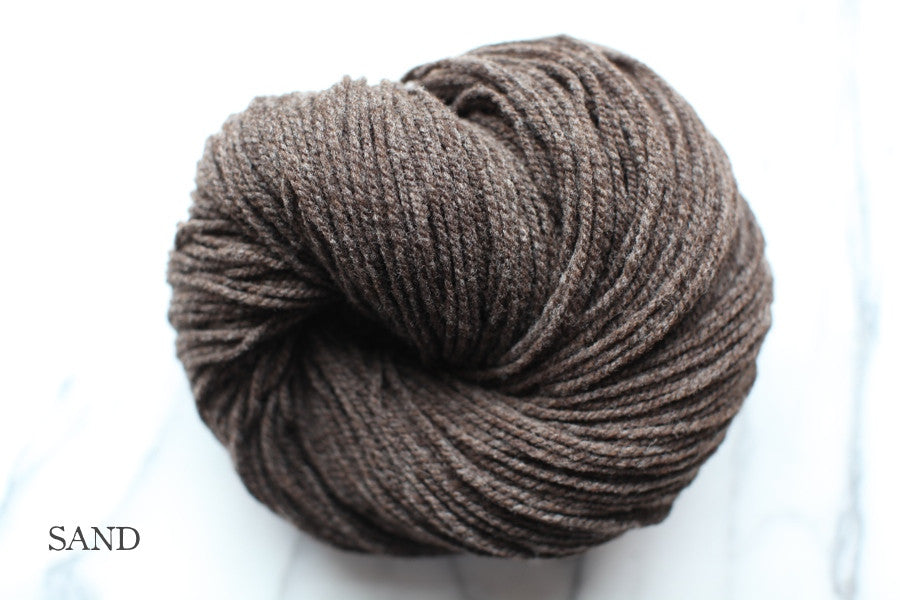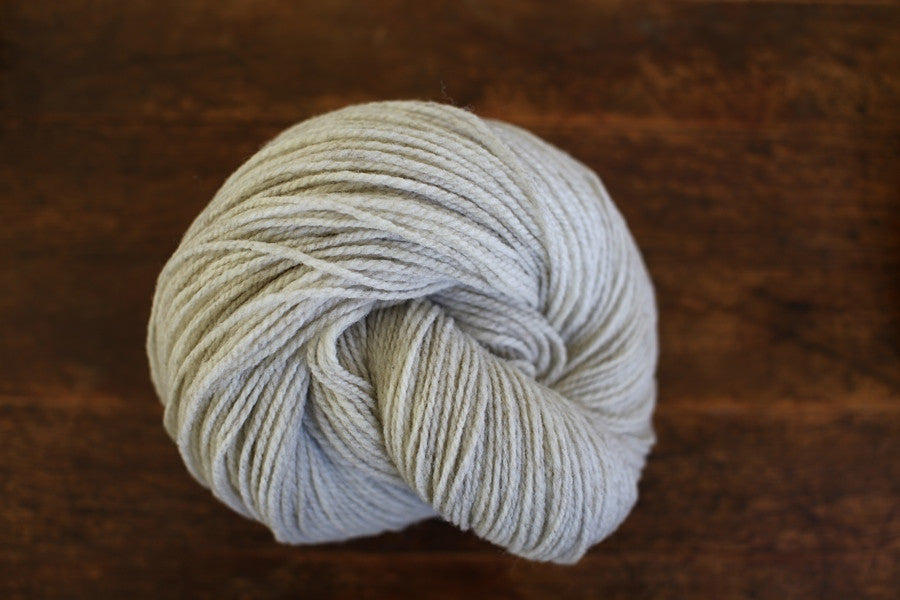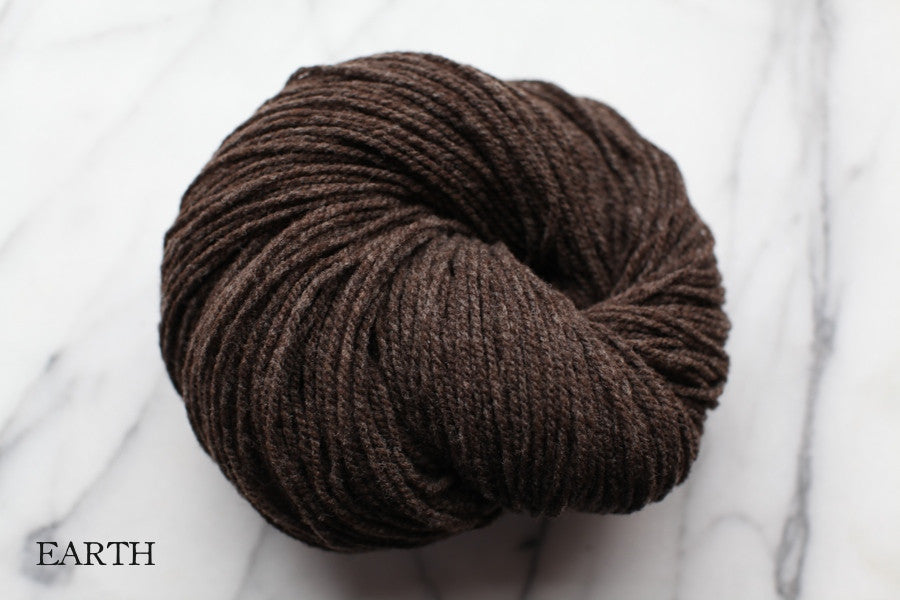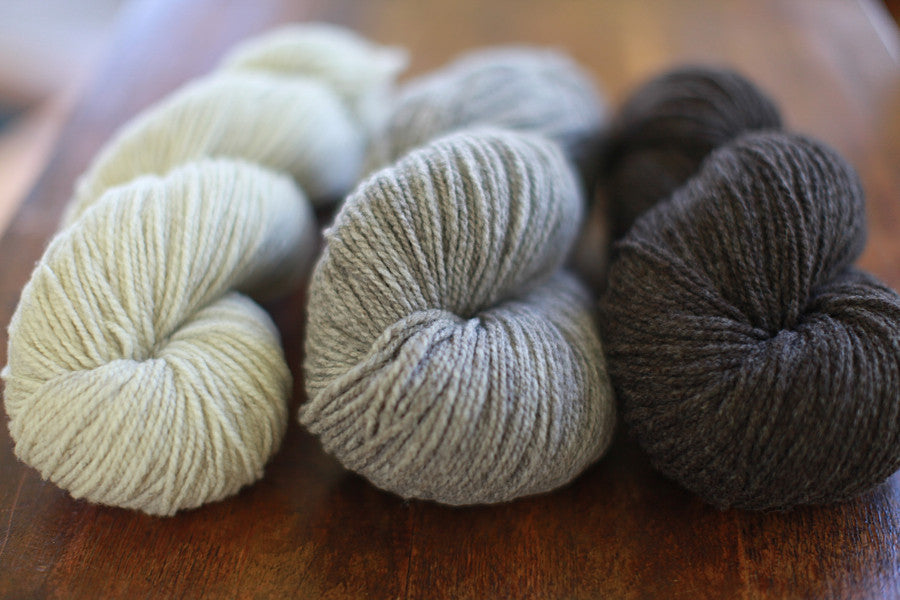CVM/Romeldale 1.0
$ 32.00
Quick Facts
Gauge: A lofty woolen-spun two-ply yarn, CVM/Romeldale 1.0 produces the most stable and cohesive (not to mention cuddly and come-hither) fabric in the 4.75-5.25 stitches per inch range on US 6-7 (4-4.5mm) needles. As always, use those numbers as a starting point for your own swatching.
Put-up: 300 yards (274m)
Skein weight: 115g
Source: Wool from CVM/Romeldale sheep raised in Pennsylvania, shorn and hand-sorted by color. Fibers scoured, picked, carded, spun, skeined, and given a second rinse at Blackberry Ridge Woolen Mill in Mt. Horeb, Wisconsin. Skeins then twisted at the Saco River Dyehouse before being tagged and shipped from Biddeford, Maine.
- The California Variegated Mutant began as a fluke. In 1915, a man named A.T. Spencer attended the Pan-American exposition in San Francisco and came home with a bunch of New Zealand Romney sheep. He crossed them with his Rambouillet flock, hoping that the longwool Romney genes would help his Rambouillet sheep grow longer wool. It worked.
In the 1940s and '50s, another man and some partners took over the breeding plan of what had, by then, become the Romeldale sheep breed. Glen Eidman was one of those partners. It came as quite a surprise when one of his ewes gave birth to a ewe lamb with a variegated coat. Other breeders might have put the lamb on the meat truck pronto, because color can jeopardize the commercial textile viability of a flock.
But this was California in the 1960s, and Eidman had bigger plans. He waited and waited and waited, trusting that the genetic odds would be in his favor. Sure enough, a few years later, a variegated ram was born. He sent his two flukes away for a romantic weekend, and over the next 15 years he continued to work diligently to create a breed that would consistently produce this same miracle of variegation.The resulting breed was named California Variegated Mutant, or CVM for short. It's often referred to as CVM/Romeldale to honor the genetics that produced the variegated offspring.
For knitters and handspinners, CVM is like catnip. It has exquisite color subtlety, which you rarely see in a finewool. It has a generous staple length and a high crimp, making it easy to spin, tremendously lofty, and hard-wearing. So rare is CVM that you'll be hard-pressed to find a commercial yarn version of it except for small batches from the breeders themselves. In fact, the American Livestock Breeds Conservancy considers it the most critically rare sheep breed in the United States. If there's CVM at a fleece show, I will not leave empty handed.
Which is a long way of trying to express just how lucky we were to get our hands on this fiber, and how rare this yarn is. The fibers come from Marushka Farms in Pennsylvania, one of the largest and most discerning CVM breeders in this country.
-
In creating this yarn, these were my thoughts. First, I needed to find a mill that could also scour these fleeces, since our batch wasn't big enough to go to Bollman's in Texas. Second, I likewise needed a mill that would be comfortable with a smaller volume while still providing consistent results across the entire batch. I needed this mill to be operated by someone with a handspinner and handknitter's sensibility, for whom the breed name meant something. Third, I needed a mill that would be willing to separate the fleeces by color and blend them into multiple shades rather than one big jumble.
As if that weren't enough, I also knew I wanted this to be a woolen mill. The other few commercially spun CVM yarns I've seen tended to be smoother and more of a subdued, worsted style. Having played with these fibers in the raw, I sensed that they wanted more air and freedom, the kind that woolen spinning alone could provide.
Thanks to the Great White Bale, I knew exactly where these fibers needed to go: Anne Bosch of Blackberry Ridge Woolen Mill in Mt. Horeb, Wisconsin. It should be noted that after shearing, these fleeces had already been hand-sorted into general color ranges by the shepherdess Marie Minnich. Once they arrived in Wisconsin, Anne sorted and separated them further in order to produce the three shades you see here. She then spun each into a beautifully cohesive two-ply, woolen-spun yarn.
Because the fibers have been spun immediately after carding -- rather than having been run through a pin-drafter or a comb to get the fibers perfectly uniform and aligned -- you have immense air, flex, and give in the finished results.
CVM is a high-crimp, generous-staple fiber, giving a perfect balance of loft and durability to the yarn. The yarn may appear lofty and soft, but it's been spun with such skill that it can withstand multiple froggings. Just ask our designers. - The minute I said the letters "CVM," Jane, Bristol, and Stephanie jumped at the chance to work with this yarn. As I said, CVM is the wool-aware knitter's catnip.
I gave them free reign to do as they wished. I had no requests in terms of garment type or style. I just asked that they spend time with the yarn first, swatch until the yarn spoke to them, and design from there.
Presented in alphabetical order by the designer, with links to the patterns on Ravelry:
Boxwood hat by Jane Cochran
Landmark Shawl by Jane Cochran
Alewives Cowl by Bristol Ivy
Oatmeal Stout cowl and mittens by Stephanie Pearl-McPhee











